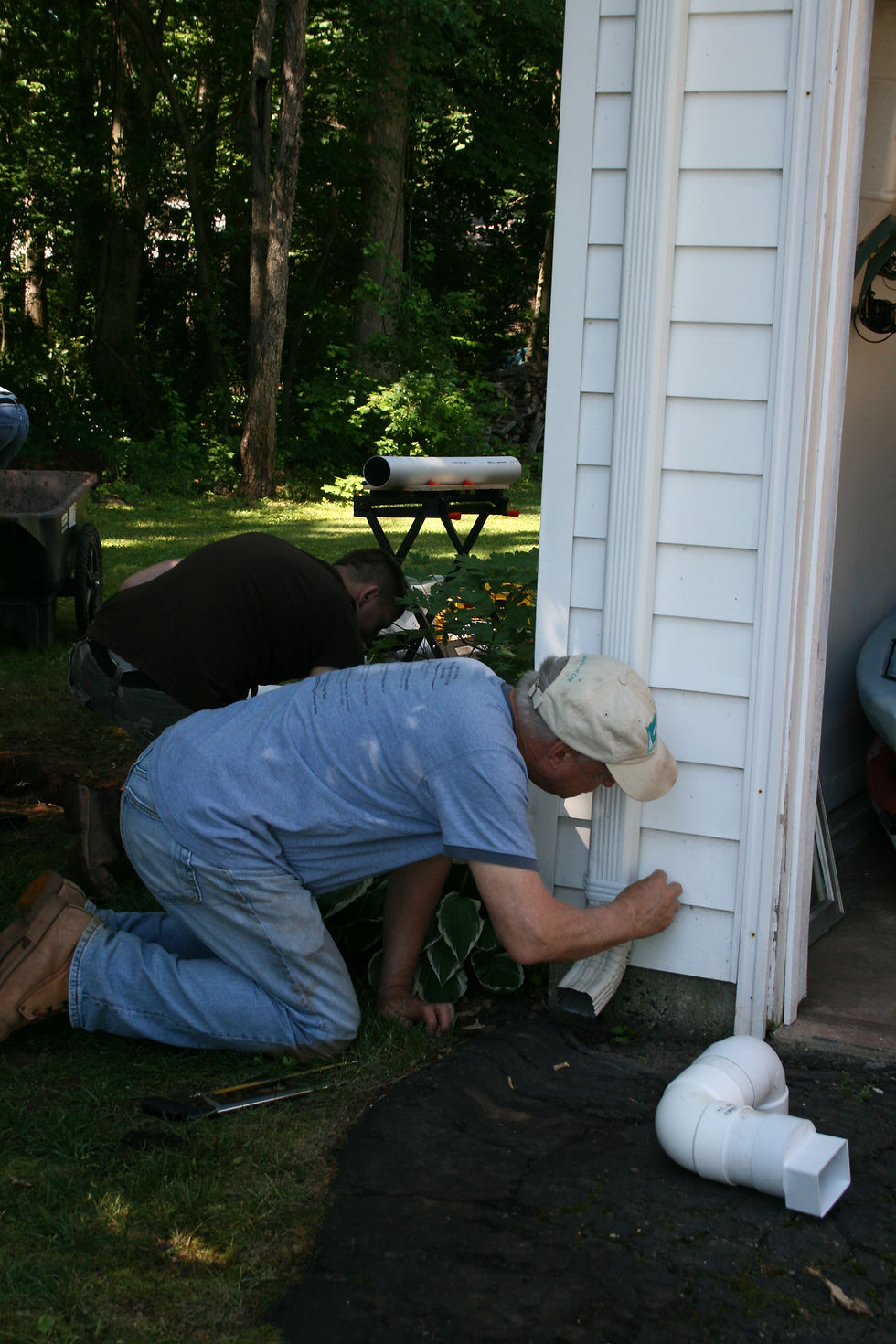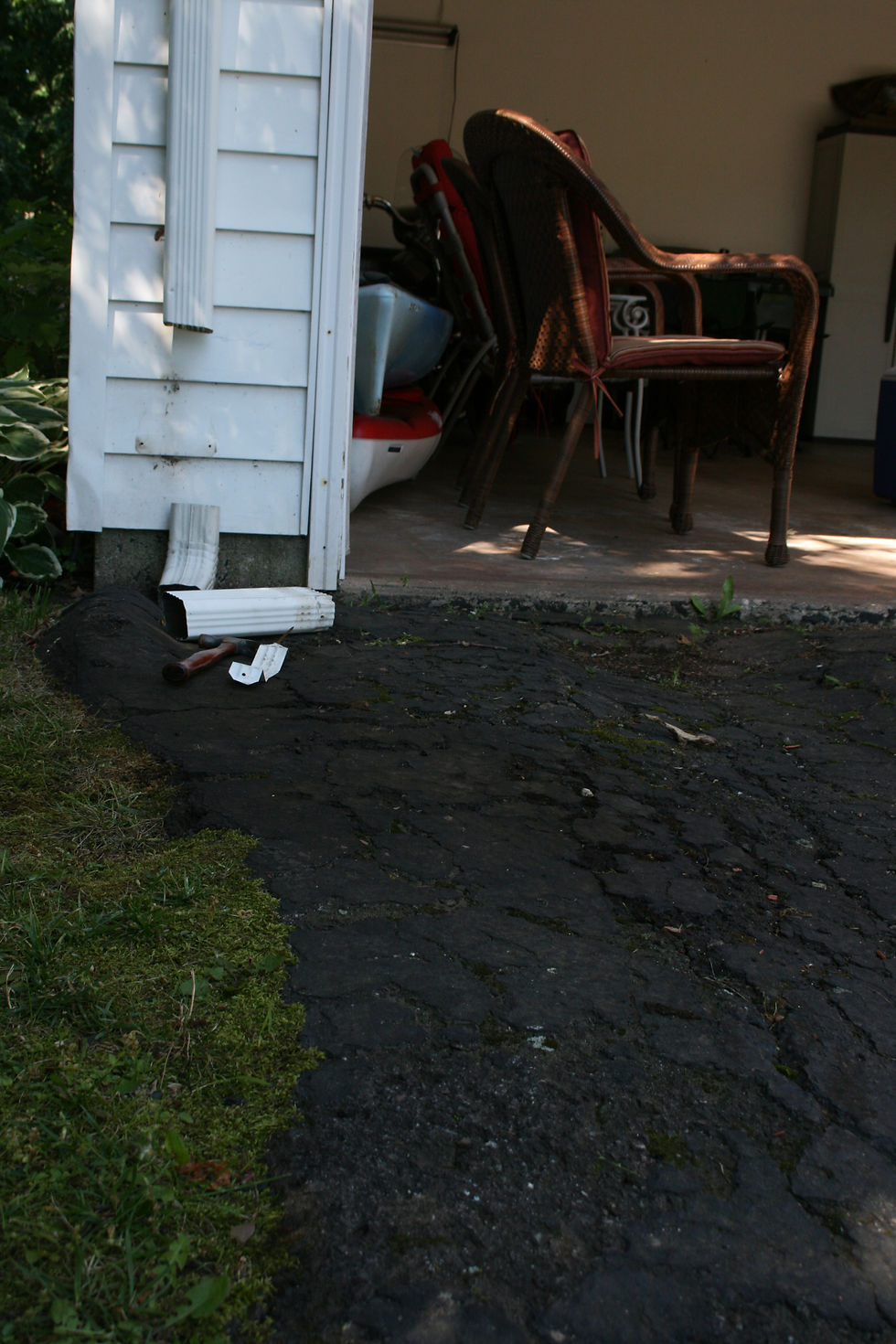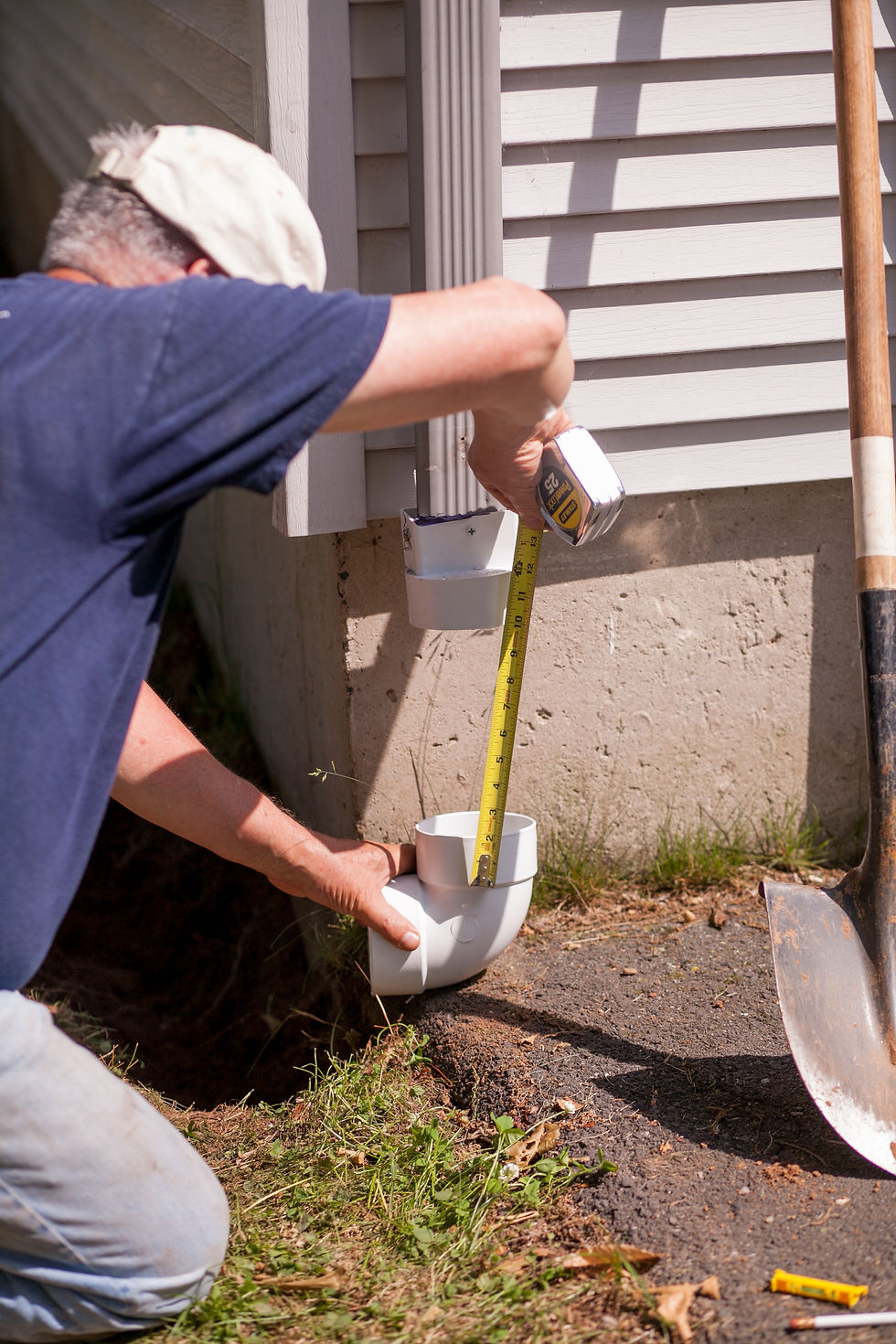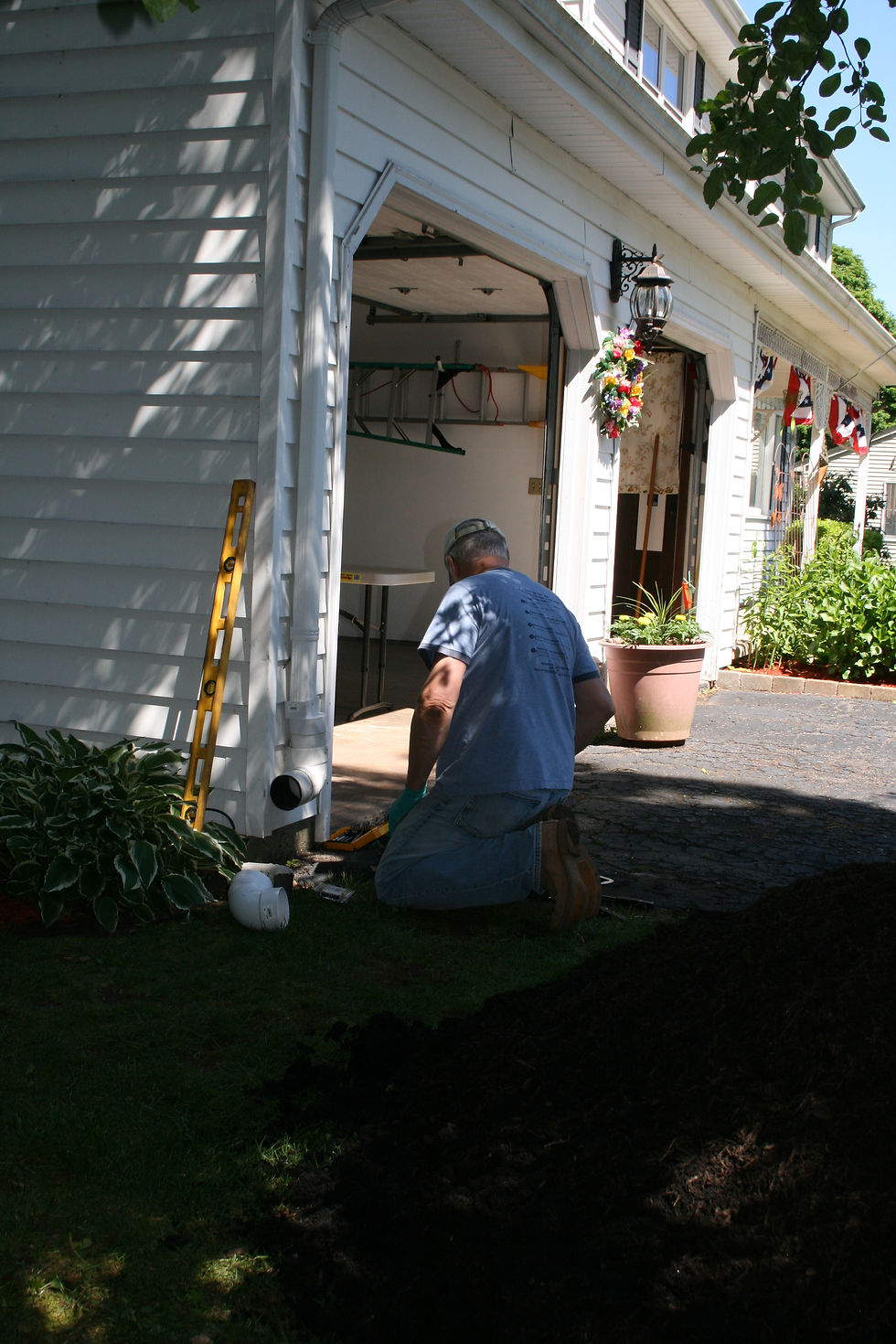
Solutions
These downspouts flow over a splash pad and into a garden. Source: Kendall Barbery
Downspout Disconnection
Disconnecting your downspout is one of the easiest things you can do to help reduce stormwater runoff.
When your gutter downspouts are connected to a pipe, all rain water from your house or building is delivered into the sewer system within minutes. Downspouts that drain on driveways also often drain directly to the stormwater system. The runoff from your house contains pollutants and contaminates that can harm water quality. Disconnecting your downspout will reroute the runoff into rain barrels, cisterns, or permeable areas like your yard or rain garden instead of the sewer. By disconnecting the downspout you are not only helping pollutants to be filtered from the water, but you can also help prevent basement backups and sewer overflows.
In fact, you can disconnect your downspout for as little as $20 in about 30 minutes. Disconnecting requires cutting the downspout and attaching an elbow, extensions, and splashblocks to redirect the water away from the house and reduce erosion. The only maintenance your downspout disconnection will require is proper upkeep of your gutters to ensure they are free of leaks and clogs and to ensure that all parts are securely fastened.
What do you need?
-
Measuring Tape
-
Hacksaw
-
Drill
-
Screwdriver
-
Pliers
-
Sheet Metal Screws
-
Downspout Elbow
-
Downspout Extension
-
Standpipe Cap
-
Splash Pad
How do you do it? Measure, Cut, Cap, Attach, Extend, Affix, and Place




Observe your site. If your downspouts are connected to a standpipe--which flows into the sewer system--determine where the water will flow if you disconnect your downspout. Once you've determined the best way to manage your water on site--whether by sending over your lawn, or into a rain barrel or rain garden--you're ready to begin.
-
Measure the downspout and mark it about 9" from the standpipe
-
Cut the downspout at the spot measured and remove the cut piece
-
Cap the standpipe
-
Attach the elbow to direct the water away from your house and away from the standpipe
-
Extend the downspout toward your yard or rain garden
-
Affix the elbow and the downspout extension into place
-
Place a splash pad near the end of the downspout extension to help prevent erosion
Resources
How to disconnect your downspout, a video by the CIty of Portland, Oregon Office of Environmental Services:
https://www.youtube.com/watch?v=4IlPiPTkgOw
Step-by-Step brocuhure from the Washington, D.C. District Department of the Environment:



